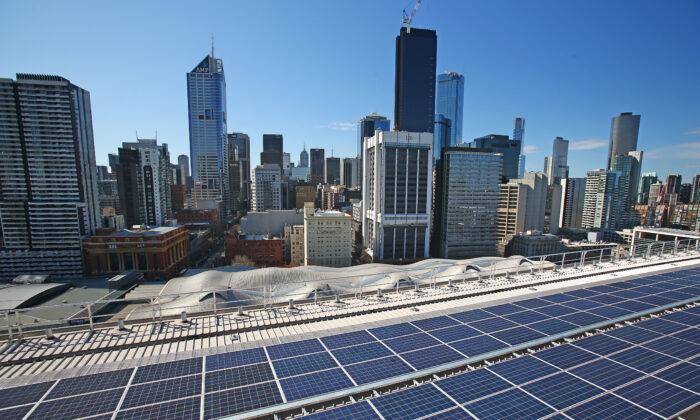The governments of Australia are, for the first time in many years, in agreement about the future of the energy industry. This was the key message from the recent energy meeting between the federal energy minister, Chris Bowen, and the various state ministers.
Even a centre-right Liberal Party minister, Matt Kean of New South Wales (NSW), did not seem disappointed or out of place at the summit; he explicitly celebrated the federalisation of energy policy, praising the United States’ approach.
The new energy policy embraced a firm decision to decarbonise Australia’s electricity sector. An emissions reduction target will be written into the National Electricity Objective. In addition, the Australian Energy Market Operator (AEMO) will be given expanded powers.
New transmission lines will be given the status of “projects of national significance,” which will perhaps help them avoid being bogged down in environmental regulations. Off-shore wind will also be developed at several sites.
This is all taken from a sweeping narrative called “The Energy Transition,” a vision of an energy sector that harvests ambient energy flows stores them, and directs them to consumers on an as-needed basis. A world with no more exhaust pipes. A shiny and white, sci-fi-esque utopia.

It sounds lovely. And indeed, the broad concept is a lovely idea. Directing energy from natural cycles is what mankind did for most of history when almost all energy came from firewood, water wheels, and windmills.
This changed in the industrial revolution when the discovery of vast, dense, buried energy sources underpinned an explosion of technologies essential for supporting today’s human population of seven billion and counting.
Is this new unity in government something to celebrate? Are we ahead of the curve? Is Australia “finally” joining all the other Western nations in embracing the future?
Risk Versus Reward
It all hinges on a fundamental decision-making paradigm: risk versus reward. What is the risk of the transition? It could fail, and we will have routine blackouts and high electricity costs. What is the reward? If it succeeds, then we might have found part of the solution for climate change!Unfortunately, every year I hear more and more otherwise sensible people speak about climate change causing the end of the world, in timeframes that get nearer and nearer.
This is despite the fact that the basic science around the situation has not changed and retains all the uncertainties that such scientific predictions inherently do. In fact, many serious and clever people see good reasons to believe that the world can adapt to the expected changes.
The increase in hyperbole is a very dangerous trend because it skews one side of the risk/reward equation. If we see our actions as providing a faint glimmer of hope against the backdrop of certain global doom, then anything is worth doing, even if it might not succeed.
Better to die having tried, right? This is the “disaster mandate”—an impending disaster can justify any response if it is sufficiently catastrophic.
Many people are convinced that this transition is an essential ingredient for preventing a cataclysm; so many that they do not honestly assess the substantial risks we seem to be taking.
The new policy places all its faith in the delivery of “firmed renewables.” But unfortunately, the required renewable generation has not been built yet, and success in firming such renewables requires the simultaneous success of several different technologies that have also not been built, nor well defined or demonstrated (such as large-scale storage).
In the meantime, we are allowing existing, reliable technology to run into the ground. The perfect storm that hit us in May this year gave us a taste of what this might look like. In the future, we risk blackouts becoming routine and this winter’s price blow-out becoming an annual event.

What is proposed is not a sensible approach to the transition. As a colleague asked me recently: in 2050, would you rather be operating a 30-year-old coal-fired powerplant built in 2022, with modern emissions and engineering standards, or would you rather be limping along with a 1980’s coal plant, designed with outdated emissions and engineering standards? Unfortunately, that is what we risk if The Transition fails.
Economic Stress Likely
Energy costs, like labour costs, are fundamental to economic productivity. If Australia allows energy prices to push upwards, then we will increase the cost of living for everyone and drive our secondary industries out of business.The biggest objection raised against the capacity mechanism is that it would prolong the life of coal-powered assets.
Why would that be? If firmed renewables were competitive, surely they would out-bid coal in the capacity mechanism? So this objection is a tacit admission that coal is cheaper than firmed renewables.
The objection is also narrow-minded. If a capacity mechanism were introduced, there are a range of different solutions that may be proffered; flexible gas generators or even diesel generators (such as is used in South Australia) might also compete to help firm up supply during The Transition; if they are the most affordable solution, they should win the bid.
What is clear, instead, is that the decisions currently being made are not expected to reduce cost. Whether taxpayers bear the cost via subsidies or individuals via power bills, we can expect a high bill for The Transition.
Centralised Energy Control
Central planning has been tried before, and it doesn’t produce good outcomes. The more we centralise control of a sector, the more decisions will be made by those who lack the specific expertise and knowledge to make them well. Conversely, the more we hand over control to the government, the fewer decisions are made by those who bear the decision’s costs.The government always boasts of how many jobs it creates for a project, but boasting about employing lots of people is like bragging about how inefficient you are. In the private sector, everyone seeks to minimise, not maximise, the number of jobs created.

The government doesn’t value efficiency and cost reduction because their income is not conditional; this is not a good model for the economy at large, which is why we don’t permit the government to own the means of production.
It is why we should also not permit the government to tie the means of production up in red tape until it can barely twitch without strangling itself.
Even though central planning is a known recipe for failure, that is again the direction we are heading. Expanding AEMO’s powers, federalising policy, rejecting the capacity mechanism—increasingly, the Australian government is exercising total control over the future of the energy sector.
Yet a good case can be made that government decisions and over-regulation have caused many of the energy crises we have had in the last year.
At the press conference, Matt Kean boasted about opening up gas production from the Narrabri to help save the day. Yet, the NSW government rejected production permits in the Narrabri in the first place, constricting supply for Santos’ nascent Gladstone LNG project.
Last year, our former prime minister appointed himself to the position of resources minister so he could reject a petroleum permit. This he did just months after buying some of the U.S.’s strategic reserves to solve our liquid fuel security problem and just months before selling some of it off again to relieve a worldwide petroleum supply problem.
Forgive me if I think the Australian government doesn’t seem to have a handle on how it should regulate the energy industry.
Unfortunately, the climate change “disaster mandate” provides permission for everything, including a gradual government take-over of the energy sector. We will descend into a cycle of the government creating new problems as they try to solve the problems they previously created, and always believing that they have no other option.
Expect something that looks like a slow-motion train wreck.





